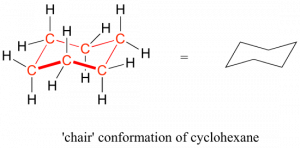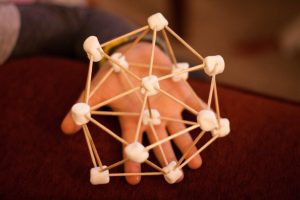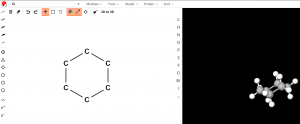
It should be clear that I side with Clark in the discussion about effects of media on learning; which feels awkward as I teach blended and online classes. This means I rely heavily on use of media such as videos, animations, and educational websites to deliver content to students while they are outside the classroom.
What does the Clark Say?
Richard E. Clark has repeatedly,stated his stance regarding use of media in teaching as “there (are) no learning benefits possible” (1994). He first published this statement from the results of his meta-analysis on decades of research on the influences of media on learning back in 1983. Clark sees media as a means of delivering instruction, using analogies like different delivery services having varying efficiencies, but has the same end result of the item being delivered. A similar analogy was that different forms of medicine, such as tablets, capsules, or liquid, all deliver the same active ingredient into the body. This was similar to Salomon’s (1979) finding that “it was not the medium which influenced learning but instead certain attributes of media that can be modeled by learners and can shape the development of unique ‘cognitive processes'”. I agree with these sentiments because it helps explain why old tried-and-true activities still work today even with our advances in technology such as computer animations or virtual reality. For instance, high school chemistry introduces cyclohexane as a two-dimensional drawing:

In university, we learn that same molecule in all its glory:

Traditionally, poor undergrads are expected to derive the three-dimensional configuration from looking at two-dimensional drawing, and then ponder how substituents on the arms would align themselves in space to minimize repulsion for a stable configuration. Innovations in technology has created molecular model kits, or marshmallows and toothpicks, to allows for physical manipulation of an object for visualizing the cyclohexane shape.


Further advances in technology have made it possible for anyone at anytime and anywhere to render any molecule online (such as on MolView) for free.

Why did I show all these images? Because according to Clark, the flat textbook picture, the plastic or marshmallow model, and the online tool should be equally effective at helping students learn about the conformations of cyclohexanes. This sounds very counter-intuitive as most would argue the first method would be nowhere near as effective as the latter two methods, due to lack of interaction.
Kozma & Co.
Some opponents of Clark would identify the manipulative aspects of hands-on or digital models to be what Kozma (1994) calls the “processing capabilities” of the medium, whereby it can act upon the symbol system presented. Being able to freely rotate or translate the model allows learners to comprehend the structure when they were unable to do so from a static image. Kozma provided similar arguments through studies using computer-based learning program called ThinkerTools and educational videos called the Jasper Woodbury series, and found that students scored higher subsequent tests compared to the control group who used traditional teaching methods (Kozma, 1994). So this means that media does influence learning and I should re-think my stance right?
“Yo, (Kozma), I’m really happy for you, I’ma let you finish, but (Clark) had one of the best (arguments) of all time!” ~ Kanye West, VMA 2009. Edited for relevance.
I agree with Clark’s (1994) direct rebuttal of Kozma’s findings because the control group did not receive the same scaffolded guidance compared to the experimental groups. Therefore, we have confounding variables affecting the result: was it the presentation of the information through video or simulation that accounted for the difference in assessment results, or was it the different pedagogical approach where one group were taught and practiced applying different skills throughout the problem processes? Using a medical analogy: consider a patient given pills and sent away with written directions, versus another who uses intravenous (IV) drip with round-the-clock care. If the latter shows greater improvements, we cannot conclude the IV treatment is more effective as the lack of care and scrutiny may have had an influences on the final results. My second argument is that in my example with molecular structures, does each method offer a unique attribute which results in acquisition of a unique knowledge? The learning gains from the physical and digital models are most likely due to the aspect of interactivity, whereby students are alleviated from mentally processing an image in their minds and instead focus on visually seeing the manipulation. Presenting the ability for visualization is the key instructional method that Clark defines as “the provision of cognitive processes or strategies that are necessary for learning but which students can not or will not provide for themselves” (1994). The implication from this is that as long as the instructional piece (such as visualization) is provided, learning will occur be it through a series perspective drawings, physical models, imaging software, or virtual reality.
This is crucial to my pedagogy for teaching online and blended classes where I can challenge the preconception that these alternate programs are more, or less, rigorous than full-time classes. If I can identify and present that vital instructional piece, then I will have more flexibility with my choice of media and not worry over how learning didn’t occur because a particular format was not used. This also allows me to keep my options open, that one day virtual or augmented reality that can fully simulate the five sense in order to let students experience a full-on (disastrous) lab experiment.
References:
Clark, R. E. (1994). Media will never influence learning. Educational Technology Research and Development, 42(2), 21–29. https://doi.org/10.1007/BF02299088
Kozma, R. B. (1994). Will media influence learning? Reframing the debate. Educational Technology Research and Development, 42(2), 7–19. https://doi.org/10.1007/BF02299087
Salomon, G (1979), Interaction of media, cognition and learning. San Francisco: Jossey Bass.
I really enjoyed the perspective you took within your post and the clear analysis of the data presented in these papers. Would you then conclude that media does not ever effect learning? Wondering what your thoughts are regarding technology and the acquisition of soft skills?
Great images!
I believe media can affect learning in the context that multiple media may serve the purpose, it’s up to the educators’ discretion which to select or craft into existence. For example, if my purpose was to teach students how to use a ruler, I can provide a physical pencil, a printed page, or digital image for them to measure. Depending on my classroom (brick & mortar or online), the choice will differ but the end result is the same.
In regards to technology and acquisition of soft skills, that is discussion centered around the youth of today. Take communication for instance, youth today are more likely to engage with each other online than face-to-face conversation. While we can certainly “teach” communications in face-to-face class activities, they may respond better if the same thing was done through conference calling software. The importance comes down to what the teacher’s purpose for that technology: is it to teach manners and body cues during discussions (easier when seeing full body), or simply improving verbal communication skills (easier for those with time/travel constraints).
Team Clark!
I really liked your comment that “I will have more flexibility with my choice of media and not worry over how learning didn’t occur because a particular format was not used.” To me, it’s statements like this that really show the value of Clark’s side of the argument. If research shows that the type of media used doesn’t impact learning (assuming the method stays the same), there’s no sense in worrying or bickering over what types of media and technology to use.